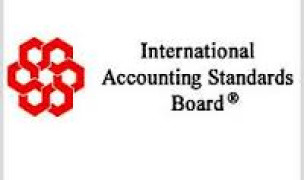 6 Terms
6 TermsHome > Terms > English (EN) > documentary
documentary
That film, television and video can record and transmit “real events” created their initial popularity. Despite the triumph of Hollywood and other narrative media, this realization also underpins a long history of American documentary production, criticism and distribution. Yet, documentary is hardly a simple or unchanging category The “public” looks for “real” events in news, “reality television” and classroom movies, while documentarians debate more abstract truth in both form and criticism. A documentary is also a story even if one claims a higher purpose: treating important social issues, forgotten, exotic or famous people, or great historical moments. Yet, documentarians manipulate all these while sharing technical and narrative frames and distribution with other media. Documentaries also have evolved with media technologies and institutional support.
Among the most important ancestors of American documentary are early ethnographic filmmakers like Edward S. Curtis, recording Native Americans, and Robert Flaherty (1884–1951), whose well-known Nanook of the North (1922) was complemented by more “American” films like Louisiana Story (1948). Both documentarians relied on “acted-out” sequences as they recorded “real life.” Margaret Mead and others continued this ethnographic tradition, aimed primarily at academic markets. Documentarians could also draw on decades of social photography including Jacob Riis, Walker Evans and WPA photographers, as well as wartime newsreels and propaganda.
Major changes came by the 1960s with readily portable cameras and synchronized sound recording. These gave the illusion of “real life” in action (devices now imitated in fiction through moving cameras and jump cuts). This technology facilitated direct cinema, which stressed unmediated observation. Here, important documentarians include the Maysle brothers (Albert 1926–, David, 1932–87), D.A. Pennebaker (1926–) and Richard Leacock (1921–), while major works include Leacock’s Primary (1960), Craig Golbert’s An American Family (1972) and films by Frederick Wiseman (1930–), such as Titticut Follies (1967) and High School (1968). The intimacy and pervasiveness of the documentary eye and the use/reading of these films evoked questions about intrusion into private life: the Loud family responded angrily to their depiction on Public Television’s An American Family (reprised in interesting ways with the 1999 Public Broad-casting System (PBS) serialization of an American Love Story), and Titticut Follies was barred from public showing for decades.
Television also changed documentary distribution and audiences. While documentaries (especially exotic or “nature” films) had occasionally played in theaters, their distribution more generally was limited to schools, museums, or other specialized settings.
Television broadcasted documentaries to a large audience via PBS, including controversial films, such as Marlon Rigg’s Tongues Untied (1989), which graphically treated gay sexuality across racial lines. Yet, in the 1990s, its independence faced pressure from government and conservative social lobbies; Ken Burns’ Civil War (1990) exemplifies alternative public television documentaries with high production values, popular audiences, commercial tie-ins and a very safe subject. Commercial and cable networks also offer news, news magazines, star documentaries, biography (the title of a popular Arts & Entertainment channel series) and MTV shows like Real Lives.
Commercial documentary however, must sell to audiences and sponsors—hence it tends to avoid controversy as well as formal complexity. Nonetheless, classic television documentaries, especially via network broadcasting, have been in decline since the mid-1970s because of shrinking ratings. In the twentieth century news magazines, talk shows and “reality” shows replaced earlier, more sober television documentaries. Cheap and fast to produce, they focus on emotional and sensational subject matters while concealing fundamental mediations.
With new distribution and materials, documentaries flourished as both a practice and a theoretical field in the 1980s and 1990s. Film schools teach through documentary exercises, while disciplines such as anthropology, history and sciences drew in documentaries. Industrial films, news television and political genres played with the form and implications of truth associated with documentary sobriety while documentary makers and critics explored reflections on the claims and form of the genre, epitomized by Bill Nichols, Michael Renov, Trinh T. Min-Ha and others.
Documentaries today incorporate different genres, styles and relations to subjects and audiences. Bill Nichols, for example, elaborates four modes of documentary representation—expository observational, interactive, reflexive. The expository mode teaches through direct address, exemplified in many educational products. Truth is obviously controlled by the film-maker, with heavy narration and silent subjects.
Observational genres try to observe the subject without interference, seeking “unmediated” truth. As in direct cinema, filmmakers sought to be “flies on the wall,” presuming that the subject would become accustomed to the camera. Wiseman, however, reinterpreted objectivity by claiming his films are his visions, while asserting that what he saw actually did happen.
Interactive documentaries involve cooperation and questioning, even within the film; hence they may be linked to film-maker reflexivity as well. Theorist-film-maker Trinh T. Minh-Ha, for example, questions documentary practices, like syncsound and real-time (as in long takes), that promote authenticity Hence, in Surname Viet Given Name Nam (1989), Trinh took pains to reconstruct interviews that viewers could perceive as staged, complicating any reading of being Vietnamese in Vietnam and America.
Documentarians choose among these modes, depending on purpose, subject and audience—high-school films on butterflies or messages of environmental concern tend to be expository while politicized explorations of identity seek radically reflexive tones.
Another recognition that emerged at the end of the twentieth century was that the subjects of documentaries have lives outside the film. Even in documentaries on distant historical subjects, people are connected to the subject by geography and shared national, ethnic, gender or class backgrounds. Subjects in documentaries and filmmakers face consequences beyond the text. People of power generally control their images and can challenge unfavorable representations. For social documentaries (and news), subjects often occupy lower socio-economic positions. While this may record the forgotten and effect change, it may also categorize victims. Here, grassroots or community videography represents an alternative appropriation of truth by groups who affirm their own truth by their limited and highly contextual documentaries. While less significant in the market (or in academic criticism), these videos affirm the genre’s flexibility amid demands made by claims of truth and power.
- Part of Speech: noun
- Synonym(s):
- Blossary:
- Industry/Domain: Culture
- Category: American culture
- Company: Routledge
- Product:
- Acronym-Abbreviation:
Other Languages:
Member comments
Terms in the News
Billy Morgan
Sports; Snowboarding
The British snowboarder Billy Morgan has landed the sport’s first ever 1800 quadruple cork. The rider, who represented Great Britain in the 2014 Winter Olympics in Sochi, was in Livigno, Italy, when he achieved the man-oeuvre. It involves flipping four times, while body also spins with five complete rotations on a sideways or downward-facing axis. The trick ...
Marzieh Afkham
Broadcasting & receiving; News
Marzieh Afkham, who is the country’s first foreign ministry spokeswoman, will head a mission in east Asia, the state news agency reported. It is not clear to which country she will be posted as her appointment has yet to be announced officially. Afkham will only be the second female ambassador Iran has had. Under the last shah’s rule, Mehrangiz Dolatshahi, a ...
Weekly Packet
Language; Online services; Slang; Internet
Weekly Packet or "Paquete Semanal" as it is known in Cuba is a term used by Cubans to describe the information that is gathered from the internet outside of Cuba and saved onto hard drives to be transported into Cuba itself. Weekly Packets are then sold to Cuban's without internet access, allowing them to obtain information just days - and sometimes hours - after it ...
Asian Infrastructure Investment Bank (AIIB)
Banking; Investment banking
The Asian Infrastructure Investment Bank (AIIB) is an international financial institution established to address the need in Asia for infrastructure development. According to the Asian Development Bank, Asia needs $800 billion each year for roads, ports, power plants or other infrastructure projects before 2020. Originally proposed by China in 2013, a signing ...
Spartan
Online services; Internet
Spartan is the codename given to the new Microsoft Windows 10 browser that will replace Microsoft Windows Internet Explorer. The new browser will be built from the ground up and disregard any code from the IE platform. It has a new rendering engine that is built to be compatible with how the web is written today. The name Spartan is named after the ...
Featured Terms
phylum placozoa
Macroscopic, flattened marine animals, composed of ventral and dorsal epithelial layers enclosing ...
phylum cnidaria
Cnidarians. Hydras, hydroids, jellyfish, sea anemones, and corals. Free-swimming or sessile, with ...
share a term with millions
Share a term with millions of users around the world and increase your online visibility.Share a ...
oak
Genus native to the Northern Hemisphere with spirally arranged leaves, catkins for flowers and ...
Everest
The last but not least mount Everest. The Earth's highest mountain, with a peak at 8,848 metres ...
aglaonema
Genus of about 20 species of usually rhizomatous, evergreen perennials from tropical forest in Asia. ...
Robojelly
Robojelly is a hydrogen-powered robot desgined in the United States that moves through the water ...
Ferdinand Porsche
Ferdinand Porsche (3 September 1875 – 30 January 1951) was an Austrian-German automotive engineer ...
Marzieh Afkham
Marzieh Afkham, who is the country’s first foreign ministry spokeswoman, will head a mission in east ...
define1
Share a term with millions of users around the world and increase your online visibility.Share a ...
Contributor
Featured blossaries
rufaro9102
0
Terms
41
Blossaries
4
Followers
International Accounting Standards
 29 Terms
29 Terms
Browers Terms By Category
- Skin care(179)
- Cosmetic surgery(114)
- Hair style(61)
- Breast implant(58)
- Cosmetic products(5)
Beauty(417) Terms
- Automobile(10466)
- Motorcycles(899)
- Automotive paint(373)
- Tires(268)
- Vehicle equipment(180)
- Auto parts(166)
Automotive(12576) Terms
- Natural gas(4949)
- Coal(2541)
- Petrol(2335)
- Energy efficiency(1411)
- Nuclear energy(565)
- Energy trade(526)
Energy(14403) Terms
- Rice science(2869)
- Genetic engineering(2618)
- General agriculture(2596)
- Agricultural programs & laws(1482)
- Animal feed(538)
- Dairy science(179)
Agriculture(10727) Terms
- Wireless networking(199)
- Modems(93)
- Firewall & VPN(91)
- Networking storage(39)
- Routers(3)
- Network switches(2)




